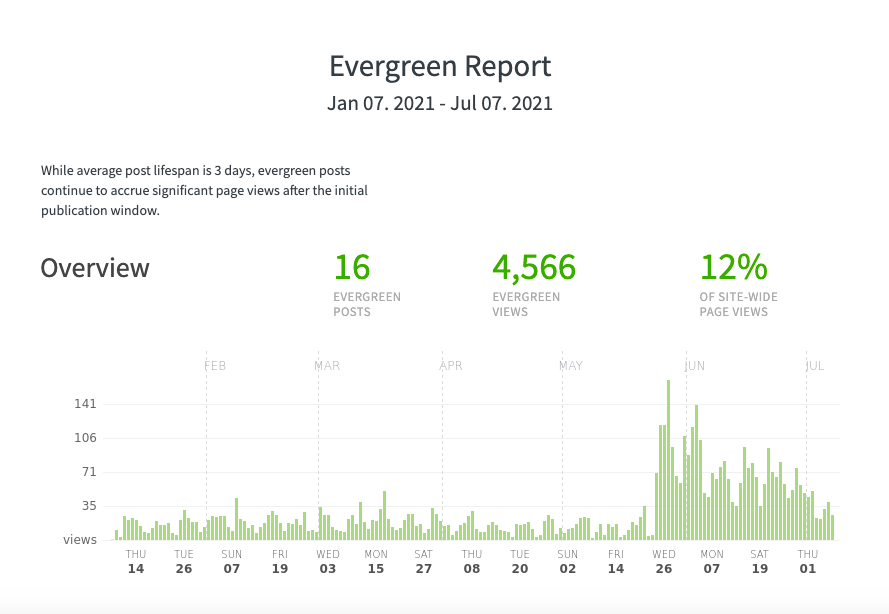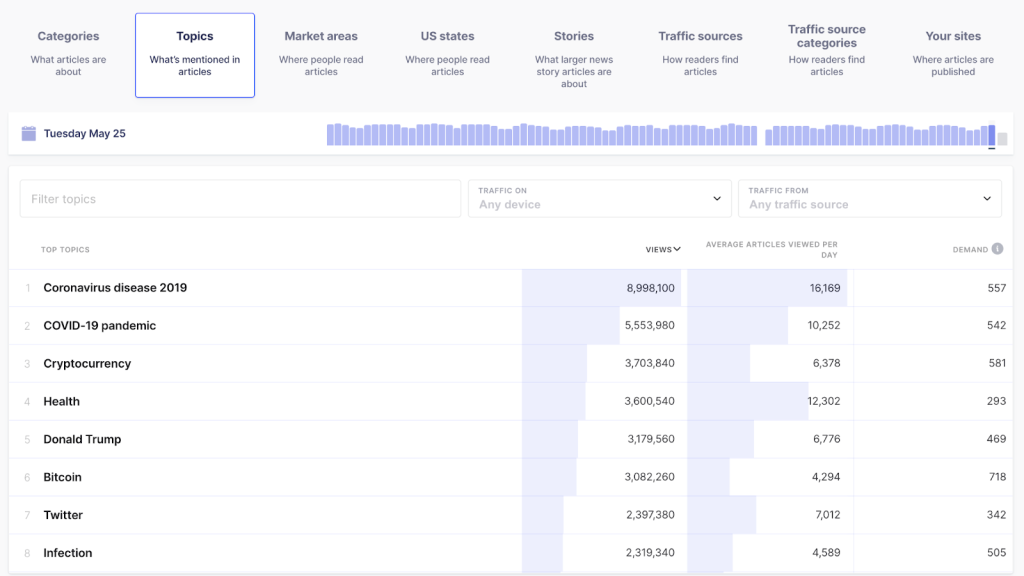6 Content Marketing Mistakes to Avoid in 2021

It should come as no surprise to anyone in content marketing that the Google algorithms are in a state of continuous change. Updates emerge constantly, and marketers who want to maintain momentum and brand searchability must keep their skills sharp.
To stay relevant in content marketing as a brand, it’s critical to keep informed of the trends. Here, we dive into some of the common content marketing mistakes to avoid in 2021 so you can capitalize on every piece you work so hard to create.
Table of Contents
- Recycling the same, tired calls-to-action
- Tracking the wrong audience engagement metrics
- Not refreshing your content archive
- Google and keyword searches to propel data-driven content marketing
- Content metadata to determine engagement
- Using a reporting tool that wasn’t built with content in mind
1. Recycling the same, tired calls-to-action
The purpose of a call-to-action (CTA) is to get people to click. But if your CTAs are too vague or generic to actually speak to the specific needs of your audience, they might not be serving their purpose. CTAs arise time and time again in common content marketing mistakes.
You can upgrade your CTAs in a variety of ways. One key is to trade out generic, nonspecific language for language that gives your audience clarity about what will happen if they follow the CTA. Content marketing expert Pierre DeBois gives the example of shifting CTA language. Instead of “Click here”, which tells the reader virtually nothing about what will happen, use “Learn more”, which tells the reader that if they click, they’ll get more relevant information. Similarly, Marketing Insider Group suggests upgrading simple, nonspecific CTAs like “Download” or “Submit” to “Download your free X” or “Get a free quote.”
It’s also important to make sure your CTAs align with audience intent at different stages of the funnel. For instance, a “Visit website” CTA will likely make more sense as a call to action for someone at the top of the funnel than someone at the bottom of the funnel. A CTA for a “Free trial” or “Schedule a demo” will make more sense for someone at the bottom of the funnel than someone in the middle.
2. Tracking the wrong audience engagement metrics
Because audience engagement determines whether or not a piece of content is successful, it’s vital to avoid the content marketing mistake of mis-measuring this metric. For a long time, content marketers have relied on bounce rate and time-on-page as audience engagement metrics.
- Bounce rate tells you nothing about the actions users take when they visit your site. It also doesn’t account for sessions without an exit event—e.g., sessions where a person visits your site, but then either leaves the tab open or goes quickly to visit another site.
- Time-on-page also doesn’t account for sessions without an exit event.
Content marketers need tools that give them insight into how (and how long) website visitors actually engage with their pages. Parse.ly’s heartbeat pixel was built with this very thing in mind. The heartbeat pixel works by pinging every few seconds after a user opens a page to check if the user is still actively engaged. If 10 seconds pass without activity, the heartbeat pixel considers the user no longer engaged. If the user returns, though, the heartbeat pixel begins measuring again.
3. Not refreshing your content archive
Most experts make the content marketing mistake of spending lots of time researching and putting together pieces that get published one time in one place. To maximize mileage on content, you should frequently revise, repurpose, and republish old content rather than just focusing on creating new pieces.
Ideas for repurposing content are virtually endless (here are 12 really good ones). Keeping in mind some basic questions as you create can help guide you. For instance, if you are working on a blog post, ask: “Could we turn this into a Medium article or a post on Quora?” If you’re putting together an infographic with lots of data, ask: “Could we turn this infographic into a promotional email or include parts of it in our next newsletter?”
Not all content can be repurposed like this. Focus on the big winners—pieces that are popular, perennial, and especially helpful for sales.
Accurately identifying these kinds of posts isn’t always easy. It’s essential to have an analytics tool that automatically tracks and shares which of your content is really rocking it. Parse.ly’s Evergreen Overview Report is just that tool. It shows which of your content is evergreen, how many page views it’s gotten, and the percentage of site-wide page views attributed to evergreen content.
Check out this example:

4. Not researching what’s currently working in content.
The content marketing industry is dynamic. What works today could be outdated within months. If you’re not staying on top of trends you’re missing out on opportunities to make your content more effective.
Avoiding this content marketing mistake is simple: stay informed of what’s happening in the world of content marketing.
Make a habit of reading the up on the latest updates in the industry, like this data study that Parse.ly created on how the content landscape changed in 2020. You can also get into the rhythm of checking things like Public and Google Trends to see which queries and questions are on the rise for the keywords you typically use for your content. This allows you to plan better as you build out your pieces.
Lastly, it can be helpful to use a tool like the Currents Dashboard to stay up to date on digital content trends. It looks beyond search and social content consumption patterns and provides a full view of what’s trending on the web.

5. Neglecting content distribution strategy.
Distribution and promotion often end up at the bottom of the content marketer to-do list. Without a solid strategy for how content gets distributed, it won’t reach the audience(s) who need to see it. As content marketer and strategist Allie Decker wrote, “Great content is a waste if your audience doesn’t know that it exists.”
Countless ideas exist for how to up your distribution game. One way is using a tool that allows you to manage distribution from multiple angles. For instance, you can use Parse.ly’s technology to crawl your content archive and automatically deliver personalized content recommendations to visitors, which can be distributed via your website, email, newsletters, or in an app.
That’s something publishing giant Gannett recently did. The company worked with Parse.ly to develop a personalized content module of “Trending Stories in [LOCATION]” as the COVID-19 virus started taking over headlines globally. This custom module, which lives at the bottom of posts on certain publications in Gannett’s network, automatically distributes relevant stories to website visitors.

6. Using a reporting tool that wasn’t built with content in mind
Interestingly, some of the most commonly used content analytics and reporting tools (Google Analytics or Adobe Analytics) were actually retrofitted for the content use-case after their inception. They weren’t created with content in mind and sometimes allow marketers to slip up with these content marketing mistakes.
Parse.ly, on the other hand, was specifically built with content as its main use-case. This makes it uniquely powerful (and uniquely accessible) for content teams who rely on custom reports, visualizations, and content-specific metrics to make their best content decisions. Schedule a demo to learn how Parse.ly helps your team avoid content marketing mistakes in 2021 and beyond.
And if you’d like to learn more about how Parse.ly and Google Analytics think about content differently, read up on our long-form guide on how Parse.ly stacks up as a Google Analytics alternative.